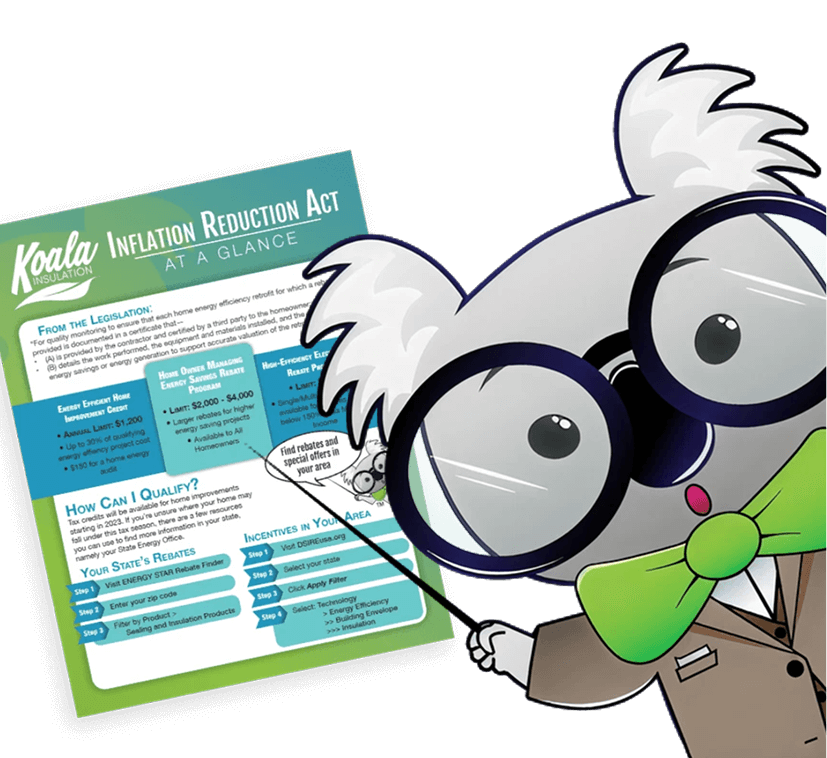How Insulation Prevents Frozen Pipes in Extremely Cold Winters

Winter is a time when freezing temperatures can wreak havoc on your home’s plumbing system. One of the most common issues homeowners face during extremely cold winters is frozen pipes. A burst pipe can lead to expensive water damage and a major disruption to daily life. However, there’s good news: proper insulation can help prevent your pipes from freezing, ensuring that your home stays safe and your plumbing system continues to function smoothly.
At Koala Insulation of St. Paul, we specialize in providing high-quality insulation solutions designed to keep your home safe and energy-efficient, especially during the coldest months of the year. In this blog, we’ll explain how insulation works to protect your pipes, why it’s so crucial in preventing frozen pipes, and how to ensure your home is properly insulated.
Why Do Pipes Freeze?
Before understanding how insulation helps, it’s essential to know why pipes freeze in the first place. When the temperature drops, water inside pipes can freeze, especially if the pipes are exposed to cold air or are located in areas of your home that are not properly insulated (like crawl spaces, attics, basements, or exterior walls). Once the water inside the pipes freezes, it expands, causing pressure to build up inside the pipe. This pressure can cause the pipe to burst, leading to leaks, extensive water damage, and costly repairs.
The damage caused by burst pipes can be catastrophic. It can result in flooding, ruined furniture and belongings, mold growth, and the need for significant repairs. The good news is that with the right insulation, you can prevent pipes from freezing and protect your home from these potentially expensive problems.
How Insulation Helps Prevent Frozen Pipes
Insulation is a crucial defense against frozen pipes. Here’s how it works to keep your plumbing system intact during cold winter months:
1. Thermal Barrier for Pipes
Insulation acts as a thermal barrier, trapping heat within the insulated space and preventing it from escaping into the cold. For pipes located in unheated areas of your home (like basements, attics, or exterior walls), the insulation helps keep the surrounding temperature above freezing, even when outdoor temperatures drop drastically. By maintaining a more consistent and warmer temperature around the pipes, insulation significantly reduces the risk of freezing.
2. Reduces Temperature Fluctuations
Extreme fluctuations in temperature can be particularly dangerous to pipes. When temperatures rapidly drop from warm to freezing, the sudden change can cause pipes to freeze more quickly. Insulation helps stabilize the temperature inside the walls or crawl spaces where your pipes are located, reducing temperature swings that could lead to freezing. This means your pipes remain at a more consistent temperature, keeping them safe from the freezing point.
3. Protection for Vulnerable Areas
Pipes in unprotected or exposed areas of your home, such as the attic, basement, or exterior walls, are particularly at risk during winter. Insulation can be installed directly around the pipes or in the areas where they are located, such as crawl spaces or attics, creating a protective shield from the cold. This is especially important for homes in colder climates like St. Paul, where winter temperatures can dip well below freezing.
4. Prevents Heat Loss in Unheated Spaces
Many homes have spaces that are not heated, such as crawl spaces, basements, or attics. Without proper insulation, these areas can get extremely cold, putting the pipes in these spaces at risk of freezing. Insulating these areas, particularly the pipes within them, keeps them at a more consistent temperature, reducing the chance of freezing. This insulation not only protects your pipes but also improves your home’s overall energy efficiency by preventing heat from escaping to unheated areas.
5. Increases Pipe Efficiency
Insulating pipes, especially hot water pipes, ensures that the water stays warm for a longer period. This means your heating system doesn’t have to work as hard to keep water at the desired temperature, ultimately conserving energy. This is particularly helpful during the winter months when heating needs are at their peak.
Types of Insulation for Preventing Frozen Pipes
Not all insulation is created equal, and the type of insulation used will depend on the specific needs of your home. Here are the most common types of insulation used to prevent frozen pipes:
1. Pipe Insulation Sleeves
These are pre-formed foam or fiberglass sleeves that fit snugly around individual pipes. Pipe insulation sleeves are an easy and effective way to insulate exposed pipes and prevent freezing. They are typically installed in attics, basements, crawl spaces, and along exterior walls.
2. Spray Foam Insulation
Spray foam insulation expands and hardens after being applied, filling gaps and cracks around pipes to create an airtight seal. This insulation type is excellent for hard-to-reach areas and irregularly shaped spaces. Spray foam is highly effective in keeping the surrounding temperature of pipes consistent and minimizing the risk of freezing.
3. Fiberglass Insulation
Fiberglass insulation is commonly used in attics and walls to prevent temperature fluctuations and protect pipes from freezing. It is available in batts or rolls and can be easily installed around pipes in vulnerable areas. Fiberglass insulation works well to prevent heat loss in unheated spaces like crawl spaces or basements, protecting pipes from freezing in extreme temperatures.
4. Reflective Foil Insulation
Reflective foil insulation works by reflecting heat back into the space, making it ideal for areas with fluctuating temperatures. This type of insulation is often used in crawl spaces, attics, and basements to provide additional protection for pipes, particularly in regions with very cold winters.
Additional Tips to Prevent Frozen Pipes
While insulation is key to preventing frozen pipes, there are other steps you can take to further reduce the risk:
- Let Faucets Drip: During extremely cold nights, allow a small amount of water to drip from faucets connected to pipes in unheated areas. Running water is less likely to freeze than standing water.
- Keep Interior Doors Open: Open cabinet doors under sinks and in bathrooms to allow warm air to circulate around pipes in these areas.
- Seal Cracks and Gaps: Inspect your home for cracks or gaps around windows, doors, and pipes that could allow cold air to enter. Seal these openings to keep the cold out.
- Keep the Heat On: Even if you’re leaving for a long period, make sure your heating system is set to a low, consistent temperature to help prevent freezing.
Why Choose Koala Insulation of St. Paul?
At Koala Insulation of St. Paul, we understand the importance of protecting your home from frozen pipes during the cold winter months. Our insulation experts can help you identify vulnerable areas in your home and recommend the best insulation solutions to prevent freezing and costly repairs. We offer a range of insulation options, including spray foam, fiberglass, and pipe insulation sleeves, to ensure your plumbing system is safe from the cold.
Conclusion
Insulating your home is one of the best ways to prevent frozen pipes during extremely cold winters. By creating a thermal barrier around your pipes and stabilizing the temperature in vulnerable areas, you can reduce the risk of freezing and protect your home from costly water damage.
If you’re concerned about the risk of frozen pipes in your home, call us at (651) 272-2720 or visit our website for a free estimate. At Koala Insulation of St. Paul, we’re here to help you keep your home safe and energy-efficient all winter long!
Find Your Location


Get a quote



